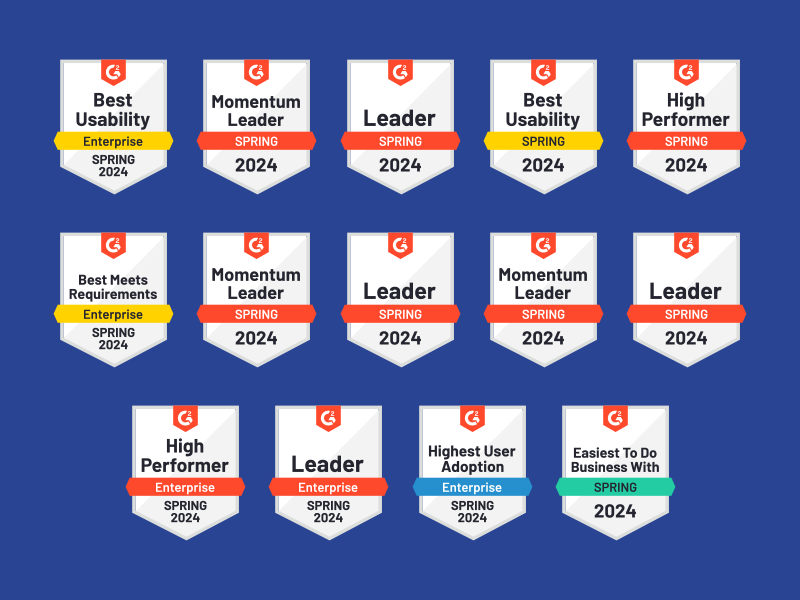There are several reasons why your organization might face an EEOC investigation. This includes a relevant employee complaint linked to job discrimination, wrongful termination, whistleblowing or concerns raised by the EEOC itself.
Under United States federal law, the EEOC prohibits workplace discrimination based on race, color, religion, sex and national origin. If your business is facing such an allegation, it is critical to handle it with care. Mishandling the situation can put your organization at risk of costly lawsuits, high employee turnover and a damaged reputation.
So, what are best practices when dealing with an Equal Employment Opportunity Commission (EEOC) investigation? In this article, we’ll dive into the EEOC’s federal agency’s investigation process and provide tips for managing and preventing such issues.
Understanding the EEOC Process
While the timeline and duration of the investigation can vary depending on the case’s complexity and the EEOC investigator workload, the investigation method typically follows these steps:
- Filing a charge.
- Mediation (optional).
- Gathering information and conducting witness interviews.
- Analyzing evidence.
- Determining the outcome.
It’s also possible that the filed charge may be dismissed after the company responds. Further, during EEOC mediation, the investigator may offer voluntary, confidential and neutral resolution services to help employers and employees reach a mutual agreement. This process can save time and resources compared to a full investigation.
Best Practices for Responding to an EEOC Investigation
There is no doubt that dealing with an EEOC investigation can be overwhelming, but there are ways you can make the process easier to manage. Here’s how you can better navigate the process:
- Take the investigation seriously. It’s critical to demonstrate your organization’s dedication to maintaining a discrimination-free workplace. Show your commitment to addressing any concerns by acting promptly and professionally, as well as maintaining open lines of communication.
- Assign a dedicated team to handle the investigation. The team should include HR and ER professionals, legal counsel and other relevant stakeholders. This ensures the process is managed efficiently and consistently.
- Review and gather relevant documentation. Collect policies, procedures, employee records and information from any previous complaint or investigation. These details will be essential when you respond to the EEOC’s inquiries and defend your organization’s actions.
- Cooperate with the EEOC. Provide requested details in a timely manner and maintain open communication with the investigator. Failure to cooperate may mean they find reasonable cause for a discrimination claim, which could lead to further legal action.
- Seek legal counsel. Consult an experienced employment attorney to help you navigate the process and protect your organization’s interests. They can advise on strategy, prepare necessary documentation and represent your company during the investigation.
How to Reduce the Risk of Future EEOC Investigations
Prevention is always better than a cure. The following strategies can help you reduce the likelihood of future EEOC investigations and foster a positive work environment:
- Review and update company policies and procedures. Ensure your organization complies with federal and state employment laws. It’s important to regularly revisit policies to confirm compliance and adapt to any legislative changes.
- Train managers and supervisors on policy enforcement. Confirm they understand the importance of enforcing fair, consistent policies. This helps create a culture of accountability within your organization.
- Foster a trustworthy, inclusive work environment. Encourage employees to directly report any concerns, so they can be investigated if necessary. This allows you to identify and resolve potential issues before they escalate.
- Track and analyze employee relations data. Identify patterns and trends in employee complaints to proactively address areas for improvement. Doing so can help your organization anticipate and address any issues quickly, before they result in an EEOC investigation.
- Incorporate fair chance hiring into your diversity, equity and inclusion (DEI) strategy. Provide equal employment opportunities to individuals with criminal records to demonstrate your organization’s commitment to fair and equitable hiring practices.
- Implement diversity and inclusion initiatives. Promote a diverse workforce and inclusive culture, which may include unconscious bias training, mentorship programs and targeted recruitment efforts.
After the EEOC resolves an investigation, it’s crucial to take the opportunity to learn from the experience and make any necessary improvements. Reflect on the investigation’s findings and implement changes to lower your chance of similar issues arising in the future.
Employee Relations Software and EEOC Investigations
It takes the right tools to address EEOC investigations. HR Acuity’s industry-leading technology provides the proper resources to handle any investigation effectively, while also enabling organizations to promote a healthy, inclusive work environment.
Incorporating HR Acuity into your HR and employee relations strategy demonstrates your commitment to creating a fair, discrimination-free workplace. Our software helps you stay on top of any issues to ensure a fair and inclusive workplace for all employees. Be confident in your company culture – stay informed about changes in employment laws and best practices, while maintaining strong employee relations processes and reducing your risk of EEOC investigations.
Want to learn more? Schedule a quick demo now!



